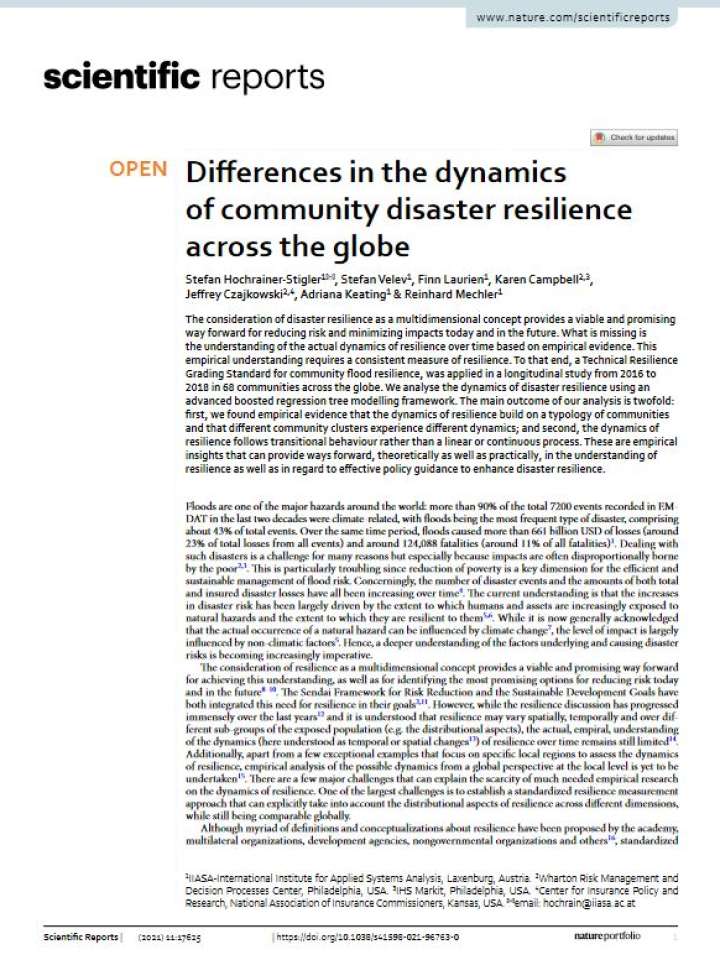Differences in the dynamics of community disaster resilience across the globe
A Technical Resilience Grading Standard for community flood resilience, was applied in a longitudinal study from 2016 to 2018 in 68 communities across the globe. The authors analyse the dynamics of disaster resilience using an advanced boosted regression tree modelling framework. The main outcome of our analysis is twofold: first, the authors found empirical evidence that the dynamics of resilience build on a typology of communities and that different community clusters experience different dynamics; and second, the dynamics of resilience follows transitional behaviour rather than a linear or continuous process.
These are empirical insights that can provide ways forward, theoretically as well as practically, in the understanding of resilience as well as in regard to effective policy guidance to enhance disaster resilience. The consideration of disaster resilience as a multidimensional concept provides a viable and promising way forward for reducing risk and minimizing impacts today and in the future. What is missing is the understanding of the actual dynamics of resilience over time based on empirical evidence. This empirical understanding requires a consistent measure of resilience.
Explore further
